Formation of Northamptonshire Area Health Authority Ambulance Service - Chief Ambulance Officer: - Mr M Tarry F.A.S.I.
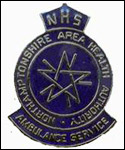 |
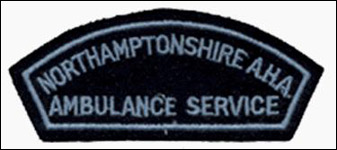 |
|
Cap Badge and Shoulder flash of the new Service
|
1974
1974 saw the reorganisation of the National Health Service the Ambulance Service was transferred from the Authority to the Area Health Authority.
At that time, the Northampton Borough Ambulance Service transferred from the Fire Brigade to the Area Health Authority.
From the Ambulance Service point of view, this was perhaps the biggest step forward that has been taken and the Ambulanceman was made part of the patient caring team, transporting patients from either homes or the roadside to the District General Hospital, where he/she very soon became accepted. With this change and the revolution in Ambulance training, the patient since the early seventies has received a vast improvement in the care and treatment given by Ambulance staffs.
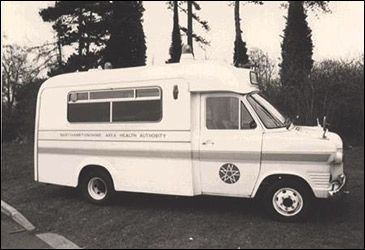 |
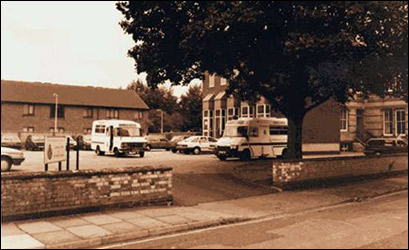 |
|
Ford Transit c1974 and Ambulance Headquarters and Control, Billing Road (photo 1989)
|
1975
In 1959 when the M1 motorway opened a few General Practitioners formed a GP Road Accident Scheme to give support to the Ambulance Service in cases of emergency.
These emergencies such as RTA’s, Works Accidents, the Doctors responded when called upon by the Ambulance Control. The Doctors work was on a voluntary basis.
1975 saw the formation of the Special Accident Equipment Fund (S.A.E.F.) to provide funds for the purchase of medical equipment for use by the GP Road Accident Scheme Doctors. The scheme became a Registered Charity and affilliated to the British Association Immediate Care Scheme. (B.A.S.I.C.S.) and the term "Flying Doctors" became attached to the scheme by the press.
About this time also there was an RTA involving a bus at Isham, as a result many donations were received by the S.A.E.F. enabling the purchase of 8 VHF radio’s some of these radio’s were heavy portables and some fitted to cars. In addition some Police Officers and Firemen organised functions and raised money for the S.A.E.F.
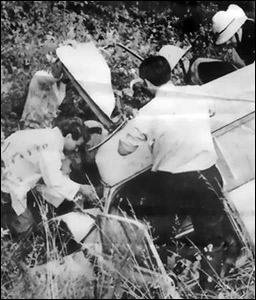 |
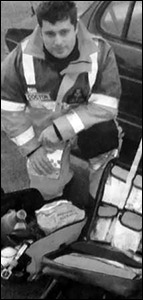 |
|
Dr Peter Gordon (S.A.E.F.)
attending an RTA c1975
|
Dr Mathew Wyse
(B.A.S.I.C.S.) c2000
|
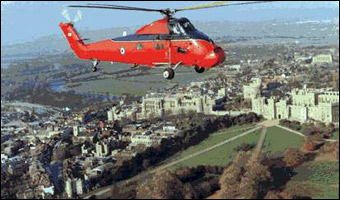 |
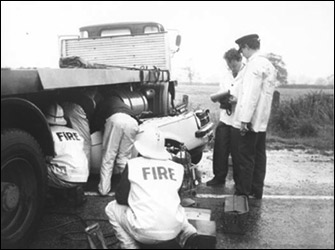 |
This incident occurred in 1978 near Kettering shows Dr Peter Gordon GP Road Accident Scheme talking to Stuart Smith.
The patient had a bruised shoulder injury!
|
|
Helicopter of the Queen's Flight was frequently seen in Northamptonshire with Ambulance crews at landing sites.
|
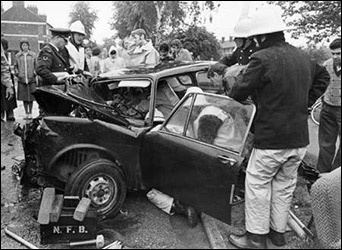 |
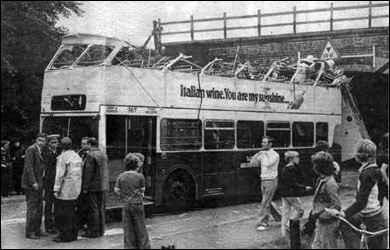 |
|
This incident at Kettering in 1978 shows Roy Phillips
in the Grey uniform of the day.
Author’s note: Roy is not wearing his Macintosh -sorry Roy!
|
Another incident at
Kettering
in 1978 when at
least 25 children were injured
|
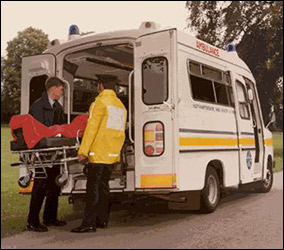 |
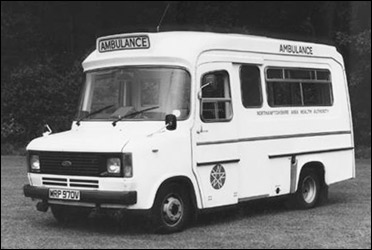 |
|
Ford Transit Ambulance circa 1978
|
Ford Transit Ambulance circa 1980
|
1980s
Association of Chief Ambulance Officers
The Association was formed in 1949 by a group of Chief Ambulance Officers in the UK and amended in 1976, following the National Health Service reorganization of 1974, when Ambulance Services were transferred from a Local Government function to become completely integrated into the National Health Service.
The objectives of the Association are to promote and maintain efficient and economical Ambulance Services within the National Health Service, by fostering mutual help amongst Chief Ambulance Officers throughout the UK and other countries, through the pooling of experience and by providing opportunities for co-operation between Chief Ambulance Officers of Health Authorities. For the same purpose meetings and conferences are held regularly to discuss problems, and exchange information and ideas appertaining to the successful management of Ambulance Services.
It should also be the focal point for other professions and bodies from which advice or information may be obtained relative to the administration and operation of an Ambulance Service, and the association should publish such reports, handbooks and literature, as are deemed to be of general importance and interest.
Around 1980 the Association of Chief Ambulance Officers introduced the following awards.
Medal awarded for 20 years Service
With two 5 years each Service Bars
|
 |
 |
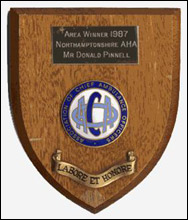 |
|
Front
|
Back
|
Special Individual Annual Award
|
|